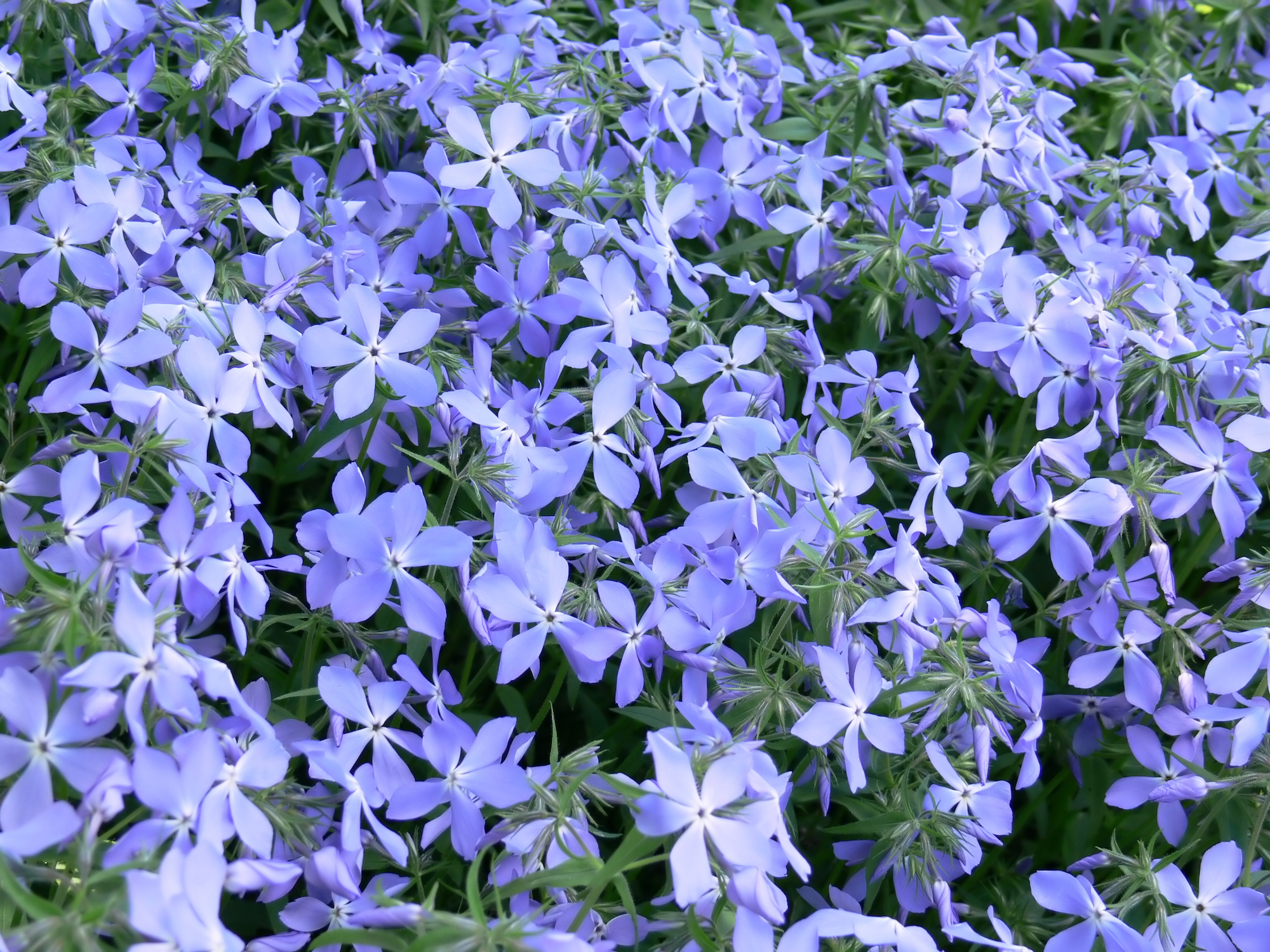
Photo Credit
Pixabay
Subhead
From Ground Covers to Garden Giants: Meet the Many Faces of Phlox
Read Next
Types
You just can’t go wrong with phlox! Here are some of the best species and varieties to try:
Low-Growing Phlox
- Creeping phlox or moss phlox (Phlox subulata) is a low-growing species that works excellently as a ground cover. It spreads slowly, growing in mounds that get 4–6 inches thick. The whole plant turns into a carpet of color in spring, when flowers cover every square inch of foliage. This phlox is particularly stunning when allowed to drape over a rock wall—imagine a waterfall of color! Creeping phlox grows best in well-draining soil and partial to full sun.
- ‘Candy Stripe’ is a popular variety with pink-and-white–striped flowers.
- ‘Emerald Blue’ produces a sea of lilac-blue flowers (perfect for that waterfall of color!).

- P. stolonifera, which also goes by the common names creeping phlox and moss phlox, is similar to P. subulata in name only. The main differences between it and P. subulata are that its leaves are oval-shaped (rather than needle-shaped), and its flowers are produced on stems that rise 6–10 inches above the foliage (rather than directly on the foliage). It prefers a shadier growing site with rich, evenly moist soil.
- ‘Sherwood Purple’ is a delicate little phlox with purplish-pink flowers.
- Woodland phlox or blue phlox (P. divaricata) is another low-growing species. As its two common names suggest, it prefers partial to full shade and moist, rich soils and produces bluish flowers in early spring. Like P. stolonifera, its flowers bloom on stems that rise about a foot or so above the creeping foliage.
- ‘Chattahoochee’ and ‘Blue Moon’ are two great varieties with beautiful blue-to-violet flowers.

Medium-Height Phlox
- Annual phlox or Drummond’s phlox (P. drummondii) grows as an annual rather than a perennial, unlike most other phlox species. Annual phlox rarely grows taller than 2 feet in height. Most varieties are not very heat tolerant, but in warmer regions, you may find the heat-tolerant varieties for sale. Plant in well-draining soil in a site that gets partial sun and doesn’t stay too wet.
Tall Phlox
- Garden phlox or summer phlox (P. paniculata) is the tallest phlox in cultivation and is probably the species that most folks have in their gardens. It grows in clumps that reach between 3 and 5 feet in height and produces panicles of flowers in mid- to late summer. Though tolerant of most lighting, it grows and flowers best in partial to full sun. It has a reputation for being very susceptible to powdery mildew, but resistant varieties are available.
- ‘David’ has bright white flowers and is resistant to powdery mildew.
- ‘Jeana’, another mildew-resistant variety, produces panicles of petite purplish flowers—similar in appearance to a butterfly bush.
Other Phlox
The phlox listed above are just a few of the many species out there. Others of interest to gardeners may be Carolina phlox (P. carolina), meadow phlox or spotted phlox (P. maculata), and sand phlox (P. bifida).
Gardening Products
More Like This
A deer came into my garden while we were gone the first two weeks in June and literally ate all of the hosta, day lily buds, and the garden phlox which is just now recovering and starting to bloom, as well as the roses, hardy geranium and annual geranium! We live in the woods and have never been bothered by deer before as our split rail fence and four foot vinyl fence seemed to confuse them with the double row of fence...
Deer may not like scented flowers, but that leaves a huge part of the season when deer are glad to mow them down, including right up to the time just before the phlox would otherwise bloom. Phlox FLOWERS may be deer-resistant; the plants themselves must be delicious.
I grow Phlox, (David) in my garden. The very first year I had beautiful flowers - that is, until the deer came a'callin. The flowers were GONE - chewed right off. I learned to spray my Phlox with a deer deterrent which works well.
My phlox seem to be finished with blooming. Should I deadhead to reinvigorate blooming since in Mid-Michigan we may have 2 more months of summer weather?
cutting back Phlox
Some of white phlox paniculata came up taller and bright pink this year. Is there a way to encourage the phlox to stay pink?
Rabbits chewed off my phlox stems before they bloomed (very early June). Will they regrow and still bloom this this season?
I planted my creeping phlox from plants about 4-5 years ago. Last year and worse this year they have started dying out from the center out. I this normal or what can I do to keep them going. Love them. Thanks.
First time growing so would appreciate your reply
- « Previous
- 1
- 2
- …
- 10
- Next »











Comments